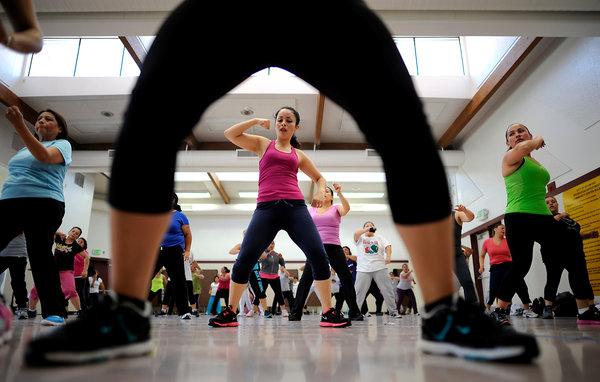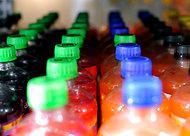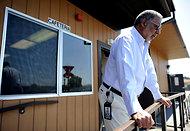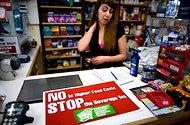Plan to Tax Soda Gets a Mixed Reception

Michael Short for The New York Times
Fitness class at a community center in Richmond, Calif., a city with high rates of poverty and obesity.
Published: June 2, 2012
RICHMOND, Calif. — The California good life — the one of endless varieties of lettuce and tasting rooms nestled in vineyards — does not extend to Richmond’s Iron Triangle, a neighborhood named for the railroad tracks that delineate its borders and historically one of the neediest communities in the Bay Area.

Enlarge This Image

Michael Short for The New York Times
A local effort in Richmond, Calif., to tax sweetened beverages has met resistance.
Enlarge This Image

Michael Short for The New York Times
One vocal opponent of the tax is Courtland Boozé, a City Council member who calls it a hardship on poor people.
Enlarge This Image

Michael Short for The New York Times
Norma Vazquez, a cashier, worries about her son, who is 10 years old and 135 pounds.
Even here at a sweaty Zumba class sponsored by a nonprofit group called Weigh of Life, the city’s proposal for a one-cent-per-ounce tax on sugar-sweetened beverages, which is to appear on the November ballot, meets up against the hard realities of residents’ lives.
“What don’t I have?” asked Rita Cerda, a longtime soda devotee, ticking off her ailments, including diabetes, high blood pressure and asthma. She is also overweight.
“I have problems drinking water,” she said. “I don’t like water.”
The proposed tax, a license fee on businesses selling sweetened drinks, would require owners of bodegas, theaters, convenience stores and other outlets to tally ounces sold and, presumably, pass the cost on to customers. It is the most visible West Coast municipal challenge yet to Big Soda, as advocates are fond of calling it.
Pending voter approval, money from the tax, which has been championed by Dr. Jeff Ritterman, a cardiologist turned City Council member, would go toward fighting childhood obesity through more bike lanes, nutritional education and after-school sports programs. Already a contentious issue locally, the potential tax is also being viewed as a beachhead by a coalition of beverage manufacturers, merchant groups and labor unions who are organizing to defeat it.
In Richmond, which has a substantial African-American and Latino population and where poverty rates are double the national average, an estimated 52 percent of elementary school students are overweight or obese, said Dr. Wendel Brunner, the director of public health for Contra Costa County, which includes Richmond.
As in other places, soda consumption is highest among teenagers, with more than two-thirds downing 1.8 sugar-sweetened beverages a day. Based on 242 calories a serving for a 20-ounce bottle of Coke, that equals roughly 150,000 extra calories and can lead to more than 20 pounds of weight gain a year, Dr. Brunner said. A recent study found an average of five retail food outlets within a quarter mile of every Richmond school.
Alongside the announcement last week by Mayor Michael R. Bloomberg of New York supporting an outright ban on the sale of sweetened drinks larger than 16 ounces, the coming vote in Richmond may be a sign that soda and similar beverages are becoming the new tobacco in terms of public perception of health risks.
“Both are pretty bold moves that wouldn’t have been imaginable even five years ago,” said Kelly M. Brownell, the director of the Rudd Center for Food Policy and Obesity at Yale University, which conducted much of the research supporting the efficacy of a one-cent beverage tax. “It shows that government is beginning to stand up to the food industry and there is more public support for doing so.”
If the Richmond ordinance passes, it will be the first of its kind in the country intended specifically to combat obesity. But soda taxes have failed elsewhere — most notably in Philadelphia, where Mayor Michael A. Nutter’s attempts to impose a 2-cents-per-ounce charge on sugary drinks have sputtered twice. Nevertheless, Mr. Nutter is scheduled to be the keynote speaker this week at the nation’s first Sugary Drinks Summit in Washington, sponsored by the Center for Science in the Public Interest.
In April, a Field Poll commissioned by a private statewide health foundation found that 62 percent of California voters surveyed said they supported imposing a special fee on sodas and soft drinks if money was used to fight obesity.
In Marin County, just across the bridge from Richmond but far more affluent, the county’s third “Soda-Free Summer,” largely a cheerleading effort for more healthy choices, has just begun. Marin’s obesity rates are among the lowest in the state, reflecting both its wealth and the profusion of parks and open spaces, where families may be spotted on weekends pushing all-terrain strollers up hiking trails with majestic ocean views.
In Richmond, many poor neighborhoods lack backyards and safe streets. The city’s socioeconomic woes date to World War II, when more than 60,000 people arrived to work in the Kaiser Shipyards, quadrupling the city’s population in two years. After the wartime boom, much of the worker housing and industrial areas eventually gave way to urban blight. Today, Richmond has the Bay Area’s highest youth mortality rate.
Courtland Boozé is a City Council member and a vocal opponent of the soda tax. “We are primarily an economically suppressed community,” he said. “It will be a huge hardship.
“I eat sweet potato pie and candied yams,” continued Mr. Boozé, who is from Louisiana. “And what about cupcakes? Are they going to tax those?”
The city’s Chamber of Commerce is also opposed to the tax. A group fighting the tax that includes the beverage industry has begun dropping off “Community Coalition Against Beverage Taxes” placards at La Flore de Jalisco Market, a small, cheerful grocery store where soda bottles in dozens of hues match the colorful piñatas hanging from the ceiling.
Norma Vazquez, a cashier, worries about her son, Eric, who is 10 years old and weighs 135 pounds. “My husband buys soda, but the doctor says no soda, just water,” she said.
Charles Finnie, known as Chuck, a vice president of BMWL, a San Francisco lobbying firm, called the tax “an administrative nightmare for local businesses” that would also put them at a competitive disadvantage, with customers opting for cheaper soda in nearby cities.
But Dr. Ritterman, the cardiologist and council member, argues that obesity-related diseases “particularly fall on our black, brown and poor communities” and that the tax would send a strong message.
Dr. Robert H. Lustig, a professor of pediatrics in the endocrinology division at the University of California, San Francisco, says that the disproportionate rates of obesity in places like Richmond lead to more Type 2 diabetes, high blood pressure, lipid problems, strokes and, it appears likely, cancer and dementia.
“It’s already a tax on poor people,” Dr. Lustig said, referring to the lack of access to health insurance.
At the RYSE Youth Center, founded 12 years ago after the killing of four high school students, the soda issue seemed both close to the heart and far away.
Kayla Miller, an 18-year-old college freshman, said that if complexion problems from too much sugar would not deter her friends from drinking sodas, neither would a tax.
Shivneel Sen, 14, does not favor the tax but knows how the money should be spent if it passes.
“The police came heck of late,” he said, recalling the recent death of a best friend. “We need more of them.”
Kimberly Aceves, the center’s executive director, says that too often, the burden for making healthy choices falls unfairly on young people. Society may say “go exercise,” she said, “but if the community isn’t safe, how many kids are going to go out running?”
“Soda is bad for you,” Ms. Aceves said. “So is violence.”




